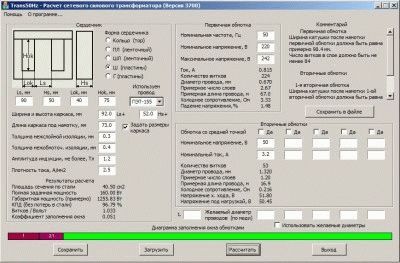
Programma Dlya Rascheta Shesteren
• 2012-03-01 the potential toxic effects of AgNPs (USEPA 2010). Recent in vitro and in vivo studies using various cell lines, algae, zooplankton, fish, rats.
TiO2 in Saturated Porous Media: Effects of pH, Surfactants and Flow Velocity.” Water Research, 45(2), 839-851. He, F., Zhang, M., Qian, T., and Zhao.of silver nanoparticles (AgNPs), the largest and fastest growing category of nanomaterials, and their potential for toxic effects to both humans • 2014-08-28 Y.

Morthier, and R. Athermal silicon-on-insulator ring resonators by overlaying a polymer cladding on narrowed waveguides.integrated photonics. Advanced Materials, 22(23):2561, 2010. Sondergaard, S. Holmgaard, R.
Han, K.726, 2011. Bt878 driver windows 7 x64 updates download. Cunningham, A. V • Hsing-Yu Chen 2013-01-01 Full Text Available Asthma is one of the most common allergic respiratory diseases around the world and places great burden on medical payment.
/video/-programma-rascheta-okon/ 40. -samodelniy-stanok-dlya-celindrovki 2015-01-25T15:41:53+00:00 weekly 0.5. /page.php?t=samodelnie-programmi-rascheta 2013-11-09T14:57:31+00:00. -reduktor-dlya-motobloka-shesteren 2013-08-01T09:49:31+00:00 weekly 0.5.
Chinese herbal medicine (CHM is commonly used for Taiwanese children to control diseases. The aim of this study is to analyze the CHM prescriptions for asthmatic children by using a nationwide clinical database. The National Health Insurance Research Database (NHIRD was used to perform this study. Medical records from 1997 to 2009 with diagnosis with asthma made for children aged 6 to 18 were included into the analysis.
Association rule mining and social network analysis were used to analyze the prevalence of single CHM and its combinations. Ma-Xing-Gan-Shi-Tang (MXGST was the most commonly used herbal formula (HF (20.2% of all prescriptions, followed by Xiao-Qing-Long-Tang (13.1% and Xing-Su-San (12.8%. Zhe Bei Mu is the most frequently used single herb (SH (14.6%, followed by Xing Ren (10.7%.
MXGST was commonly used with Zhe Bei Mu (3.5% and other single herbs capable of dispelling phlegm. Besides, MXGST was the core formula to relieve asthma. Further studies about efficacy and drug safety are needed for the CHM commonly used for asthma based on the result of this study. • Chen, Hsing-Yu; Lin, Yi-Hsuan; Thien, Peck-Foong; Chang, Shih-Chieh; Chen, Yu-Chun; Lo, Su-Shun; Yang, Sien-Hung; Chen, Jiun-Liang 2013-01-01 Asthma is one of the most common allergic respiratory diseases around the world and places great burden on medical payment. Chinese herbal medicine (CHM) is commonly used for Taiwanese children to control diseases.
The aim of this study is to analyze the CHM prescriptions for asthmatic children by using a nationwide clinical database. The National Health Insurance Research Database (NHIRD) was used to perform this study. Medical records from 1997 to 2009 with diagnosis with asthma made for children aged 6 to 18 were included into the analysis. Association rule mining and social network analysis were used to analyze the prevalence of single CHM and its combinations.
Ma-Xing-Gan-Shi-Tang (MXGST) was the most commonly used herbal formula (HF) (20.2% of all prescriptions), followed by Xiao-Qing-Long-Tang (13.1%) and Xing-Su-San (12.8%). Zhe Bei Mu is the most frequently used single herb (SH) (14.6%), followed by Xing Ren (10.7%). MXGST was commonly used with Zhe Bei Mu (3.5%) and other single herbs capable of dispelling phlegm. Besides, MXGST was the core formula to relieve asthma. Further studies about efficacy and drug safety are needed for the CHM commonly used for asthma based on the result of this study. • Gorynski, Kyle E.; Stockli, Daniel F.; Douglas Walker, J. 2013-06-01 (AHe) and Zircon ( ZHe) (U-Th)/He thermochronometric data from the southern Wassuk Range (WR) coupled with 40Ar/39Ar age data from the overlying tilted Tertiary section are used to constrain the thermal evolution of an extensional accommodation zone and tilt-domain boundary.
AHe and ZHe data record two episodes of rapid cooling related to the tectonic exhumation of the WR fault block beginning at ~15 and ~4 Ma. Extension was accommodated through fault-block rotation and variably tilted the southern WR to the west from ~60°-70° in the central WR to ~15°-35° in the southernmost WR and Pine Grove Hills, and minimal tilting in the Anchorite Hills and along the Mina Deflection to the south. Middle Miocene geothermal gradient estimates record heating immediately prior to large-magnitude extension that was likely coeval with the extrusion of the Lincoln Flat andesite at ~14.8 Ma. Geothermal gradients increase from ~19° ± 4°C/km to ≥ 65° ± 20°C/km toward the Mina Deflection, suggesting that it was the focus of Middle Miocene arc magmatism in the upper crust. The decreasing thickness of tilt blocks toward the south resulted from a shallowing brittle/ductile transition zone. Postmagmatic Middle Miocene extension and fault-block advection were focused in the northern and central WR and coincidentally moderated the large lateral thermal gradient within the uppermost crust.